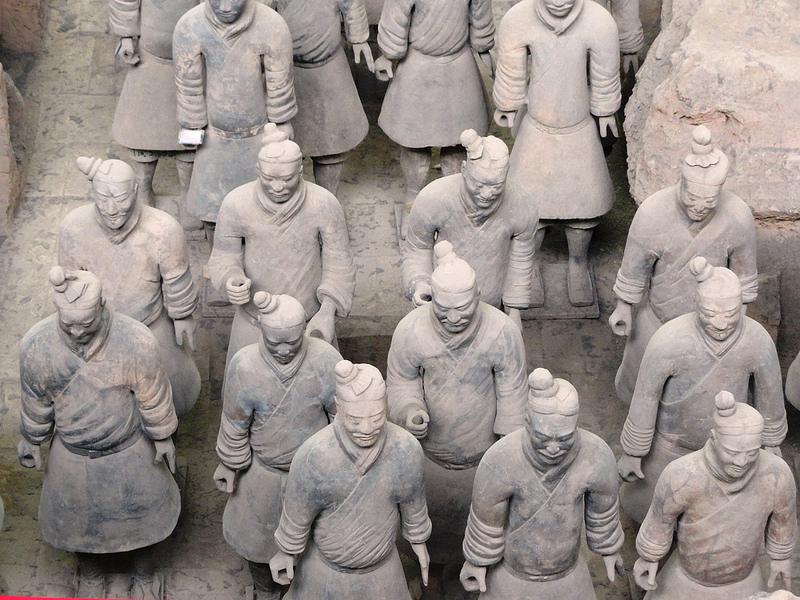
Could this (or something like it):

Have inspired this?:

Lukas Nickel, of the School of Oriental and African Studies at the University of London, believes that recently translated ancient texts indicate that large statues began to appear in the western-most portions of China in the Qin Dynasty (around 221 BCE), in a region known in the texts as Lintao. And the statues were of 12 giants clad in foreign robes.
The direct evidence of Greek influence seems absent, but Nickel draws some comparisons to the art and culture of the Hellenistic Near East with what was happening around the same time in the 3 century Far East with regard to the sudden and short lived fascination with large terracotta statuary in China.
I’ve yet to read Nickel’s monograph (2013) -still looking for someone with access, but there’s are decent write ups at Live Science and Archaeology.org.
Reference:
Nickel, Lukas (2013). The First Emperor and sculpture in China. Bulletin of the School of Oriental and African Studies, 76(3), 413-447.
Were please, not where.
Ha! I should proofread more carefully when bourbon has been consumed! Thanks… all corrected now.